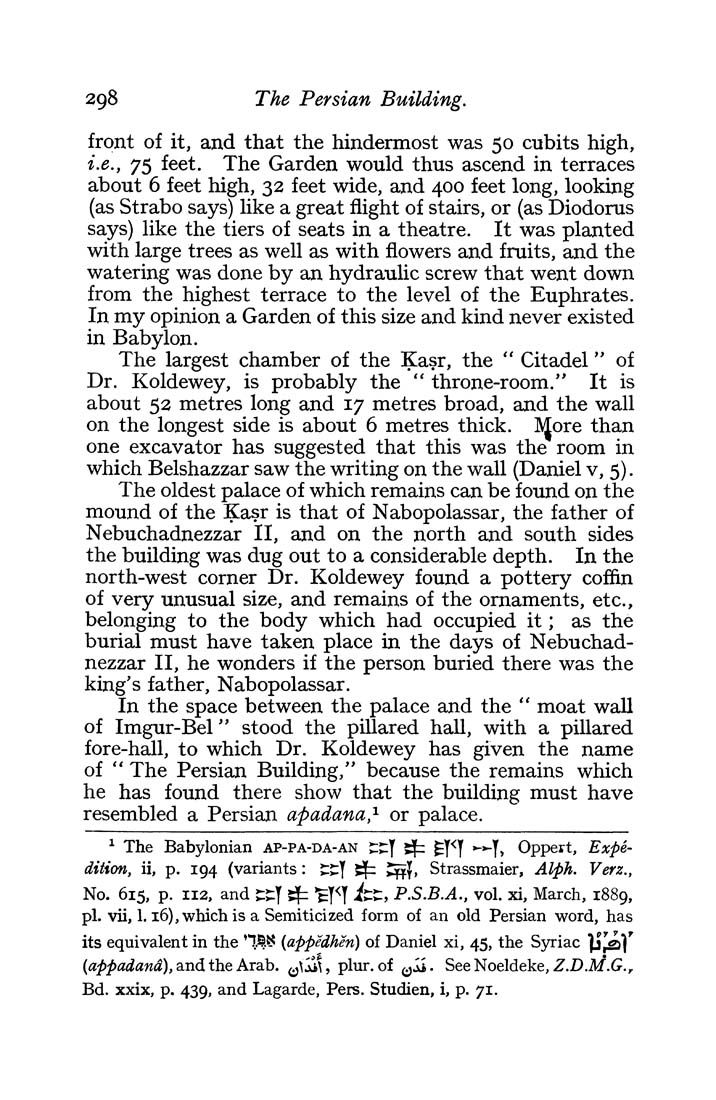298 The Persian Building.
front of it, and that the hindermost was 50 cubits high,
i.e., 75 feet. The Garden would thus ascend in terraces
about 6 feet high, 32 feet wide, and 400 feet long, looking
(as Strabo says) like a great flight of stairs, or (as Diodorus
says) like the tiers of seats in a theatre. It was planted
with large trees as well as with flowers and fruits, and the
watering was done by an hydraulic screw that went down
from the highest terrace to the level of the Euphrates.
In my opinion a Garden of this size and kind never existed
in Babylon.
The largest chamber of the Kasr, the " Citadel" of
Dr. Koldewey, is probably the " throne-room." It is
about 52 metres long and 17 metres broad, and the wall
on the longest side is about 6 metres thick. More than
one excavator has suggested that this was the room in
which Belshazzar saw the writing on the wall (Daniel v, 5).
The oldest palace of which remains can be found on the
mound of the Kasr is that of Nabopolassar, the father of
Nebuchadnezzar II, and on the north and south sides
the building was dug out to a considerable depth. In the
north-west corner Dr. Koldewey found a pottery coffin
of very unusual size, and remains of the ornaments, etc.,
belonging to the body which had occupied it; as the
burial must have taken place in the days of Nebuchad¬
nezzar II, he wonders if the person buried there was the
king's father, Nabopolassar.
In the space between the palace and the " moat wall
of Imgur-Bel" stood the pillared hall, with a pillared
fore-hall, to which Dr. Koldewey has given the name
of '' The Persian Building," because the remains which
he has found there show that the building must have
resembled a Persian apadana,^ or palace.
^ The Babylonian ap-pa-da-an XX.] ^ ^y<y ^^]^ Oppert, Expe¬
dition, ii, p. 194 (variants: t-t] >l^ hS][, Strassmaier, Alph. Verz.,
No. 615, p. 112, and t^] ^ *gy<y itt, P.S.B.A., vol. xi, March, 1889,
pi. vii, 1.16), which is a Semiticized form of an old Persian word, has
its equivalent in the ''IM (appedhen) of Daniel xi, 45, the Syriac ^j^*)'
(appadand), Siiid the Araib. ^\j,i\, plur. of ^Ji. SeeNoeldeke, Z.D.M.G.„
Bd. xxix, p. 439, and Lagarde, Pers. Studien, i, p. 71.
|








